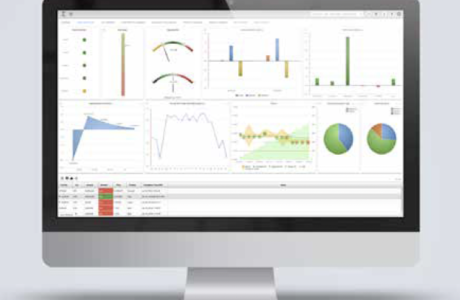FX Trading Portal
By the AES FX Product & Trading team at Credit Suisse
When asked to define success, your answer will likely be different to ours, and the dimensions that it is defined on will vary as well. That is because success, in general, is rightfully subjective. Success in trading, particularly so. One thing that we recognized early on in our collaboration with institutional investors is that even in the context of an institution’s KPIs, each individual charts their own trading style. If you go past the high-level expectation of how a pension fund, central bank, hedge fund, asset manager or corporate treasury trader should execute, you will find that execution decision making and assessment is mostly driven by individuals. Individual traders understand the complexity and sometimes disorderliness of financial markets, the uncertainties embedded in price trends, and the risk/reward profiles they are willing to entertain.
Select for success
When addressing FX algo selection, we consider it important not to generalize and provide conventional guidance based on client profiles. Rather, the focus should be on providing advice specific to the individual and their own definition of performance benchmarks. Providing this expertise takes times and effort, but delivering a high level of understanding and tailored guidance that develops from this process is highly valued by the end client. Our extensive experience in the FX Algo market dispels the myths of corporates only trading TWAPs and hedge funds aggressively crossing spreads, and provides added nuance to conversations based on performance benchmarks instead.
Performance vs. TWAP/VWAP
If your goal is to achieve a defensible price, aligned with the market trend for the day, in many cases a TWAP or VWAP algorithm can be the suitable choice. The algorithm’s timing, the order’s notional size and market events however, complicate this decision. To match a representative price in an illiquid currency pair, an algo’s duration concentrated on periods of peak liquidity rather than the full trading day can outperform. If your order size is significant, a maximum participation parameter might be required to cap slice sizes and if the order size is too small, its participation footprint might need to be adjusted to truly track the price trend / target benchmark. In the case of an economic announcement with expected price impact, the market can exhibit a high concentration of volume at the time, and a targeted opportunistic algorithm could outperform a TWAP-style execution. During periods of unexpected market swings, active order management or the use of price triggers can yield notable benefits in execution outcomes. With the latter, clients can utilize advanced instructions (e.g. I-Would or Contingent trigger commands), enabling their algo orders to change execution behavior based on a complex set of rules and take advantage of trading opportunities following market events.
Performance vs. Time of Trade Benchmark (Risk transfer price and/or IS)
If your focus is cost of execution from the point of order arrival, the traditional choices would typically include risk transfer or a liquidity-seeking algorithm, most likely with a short duration and an active trading behavior. This algo selection decision however, needs to be built on a clear understanding of the price trend, the market conditions, the relative strength of the orderbook at the time and the underlying liquidity provider profiles. In favorable price-trend environments, combining a passive algo with an option to complete the balance of the order in full if the market subsequently moves away could be an appropriate trade-off to an immediate risk transfer. If the market overall is fast moving with high volatility, a Sniper-style algorithm has proven to be a very effective execution option in trading at opportune price points and extracting liquidity in a timely manner. The strength of the orderbook is also telling, as certain occasions with thin liquidity at the top-3 levels of the consolidated book could call for a fullamount risk transfer trade. Lastly, the liquidity pool offered by the algo provider will have a substantial influence on the expected performance in terms of market impact, as the risk management profile of the underlying liquidity providers can greatly influence whether your trades’ impact is absorbed or compounded.
Performance vs. Spread Capture
If your objective is to look for price improvement and have a tolerance for time risk or a strong directional view, the execution you are looking for will need to exhibit high spread capture. The decision process is however compounded by the algo parameters, the optionality of order book peg levels and even more so in this case than in others, by the liquidity the algo is interacting with. If your order is outsized for the market, you need to balance the price level so that your order in aggregate attracts as much liquidity at the top of book, but it is not adversely selected; a solution to which could be achieved via a TWAP with an adaptive price aggression profile. In the case of a volatile market, a hybrid algo with both a passive peg and an opportunistic element could be used to allow for crossing skew-safe price streams which outperform the public venue mid. For more illiquid markets with wide spreads, a Float (order book pegging) algorithm pegged onside, with presence in both public and non-public markets can both attract flow and help identify pockets of liquidity with low market impact.
Be intentional about it
From the perspective of the buy-side, it is valuable to first define yourself based on your trading objectives, then evaluate the market conditions and only then move on to the execution option selection. Being clear and intentional about the end result will make it easier to navigate the complexity at hand, and subsequently make it easier to interpret and contextualize the real-time performance of the trade and the post-trade Transaction Cost Analysis. To summarize, the visible headline algorithm, timing throughout the day and duration are just the first layer of depth in the decision making process. The outcomes can be fine-tuned to target your success benchmark through algo parameters, and they should be contextualized in the current market conditions. This should be further supplemented by a trained ability to see patterns in the interaction of these algorithms with expected market conditions, orderbook dynamics and underlying liquidity dynamics. Recognizing the factors involved in algo selection is key, and requires careful consideration. Oftentimes, a decision based on superficial information is sufficient to achieve a good enough execution. However, if you are looking for an excellent execution, understanding the layers of complexity that drive this decision process can prove to be invaluable. Remember to ask your algo coverage desk the right questions, when it matters the most.





















